4 Fall Lawn Problems to Watch Out For in Idaho
There are lots of things to watch out for in the fall.
Caramel apples. Hot chocolate. Cozy sweaters. Halloween candy. Fungus. Weeds.
Wow, that list went bad fast.
What are the top fall lawn problems in Idaho?
Grab a caramel apple and let’s take a look.
1. Irrigation Issues
Don’t forget about lawn watering just because it’s football season.
Fall lawn care includes adjusting your irrigation system as the weather cools down.
Remember, it’s not 90 degrees anymore. More like 60. If you‘re still watering like it’s July, time to turn back the watering. Too much water can encourage fungus.
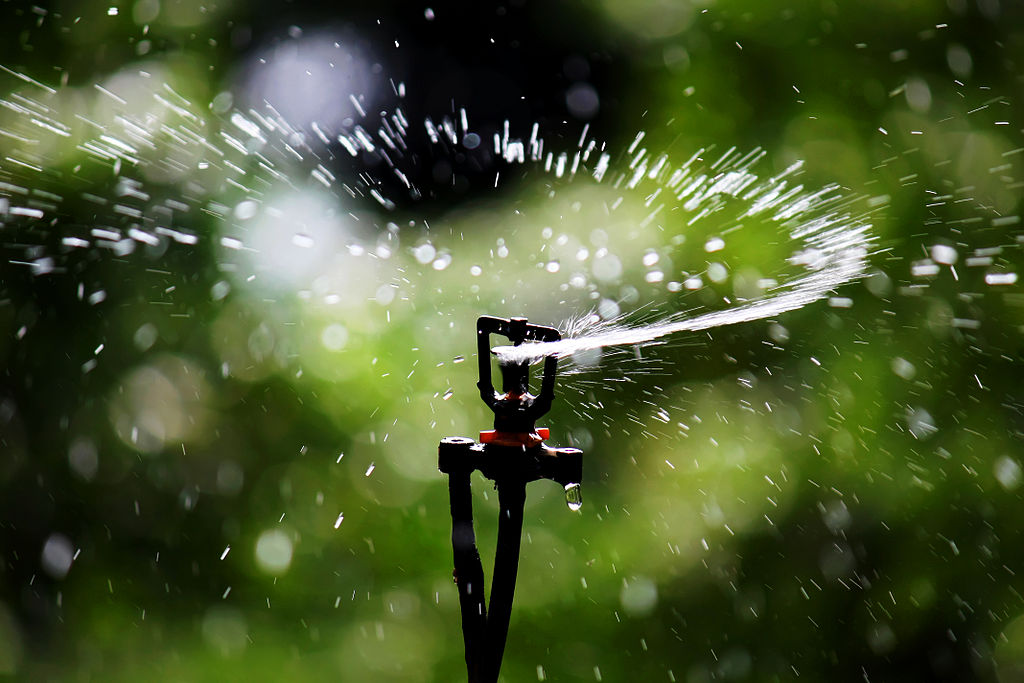
Or maybe you figure now that it's cooling down, your lawn doesn’t need watering anymore.
Not true. You’re still thirsty in October, right? So is your lawn.
It’s still growing throughout the fall, and much of the growth is underground, in its root system.
Those roots need water to help them absorb nutrients and hang in there through the long winter ahead.
2. Weeds (Nope, They’re Not Dead Yet)
We know what you’re thinking. Your lawn looks pretty good now, right? Maybe just skip that fall weed treatment.
Don’t let your guard down just because it’s fall. Plenty of weeds are still on the loose, so add weed control to your fall lawn care list.
In Idaho Falls, most of our calls about weeds this time of year are about thistles.
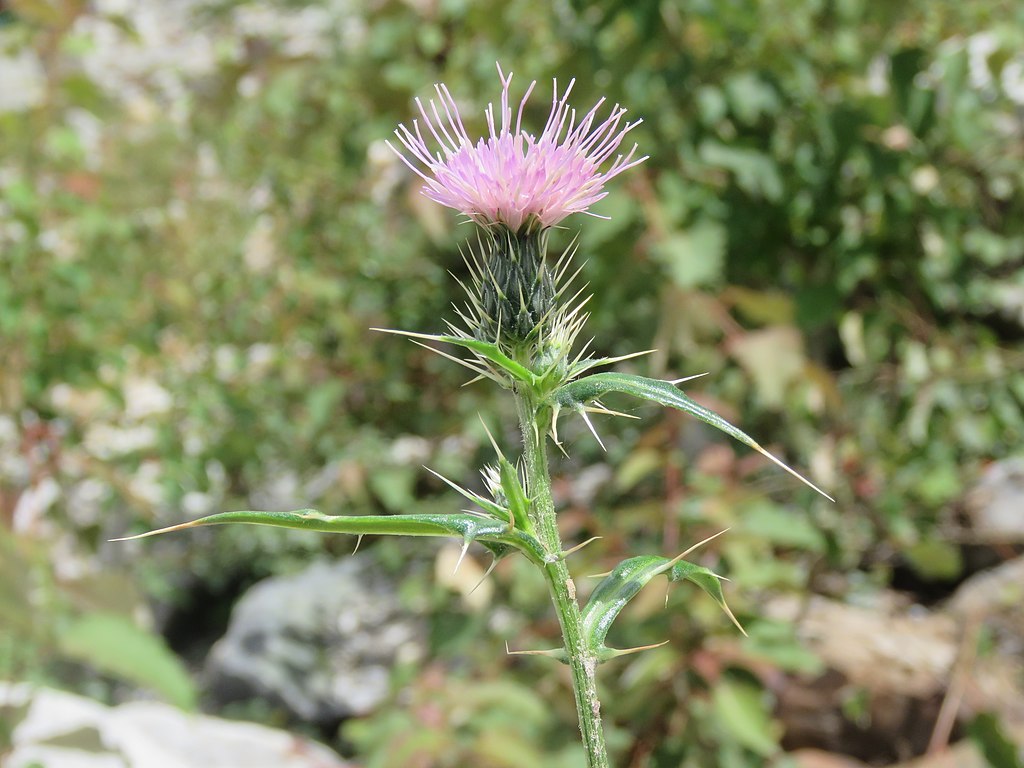
They’re as prickly as they sound.
Canada thistle is double trouble. It spreads not just by seed, but by its tough roots that can extend for 10 feet.
It also needs at least a double dose of weed control, in spring and fall, before it can flower and seed.
Lots of weeds germinate in the fall, survive the winter, and actively grow in spring, including thistle, dandelions, and clover. That means the only way to prevent these pesky invaders is applying fall pre-emergent.
Pre-emergent herbicides stop weeds before they sprout by preventing weed seeds from germinating. So timing is everything. That means fall.
(If you’re seeing crabgrass in the fall, it probably means you didn’t apply crabgrass pre-emergent in the spring.)
Fall lawn care now will help decrease your weeds next spring.
Weeds can be a symptom of a deeper lawn problem, too, so having a professional diagnose the problem can help make your turf healthy and lush again.
3. Fall Lawn Problem: Fungus
Lawn fungus often dies down once cool weather moves in, but it can still be a fall lawn problem in Idaho.
Keep an eye out for powdery mildew, a fungus that attacks the surface of the grass blades, creating a fine, white powdery coating.
If your Idaho lawn is bluegrass and tends to be shady and wet, it can be susceptible to powdery mildew.
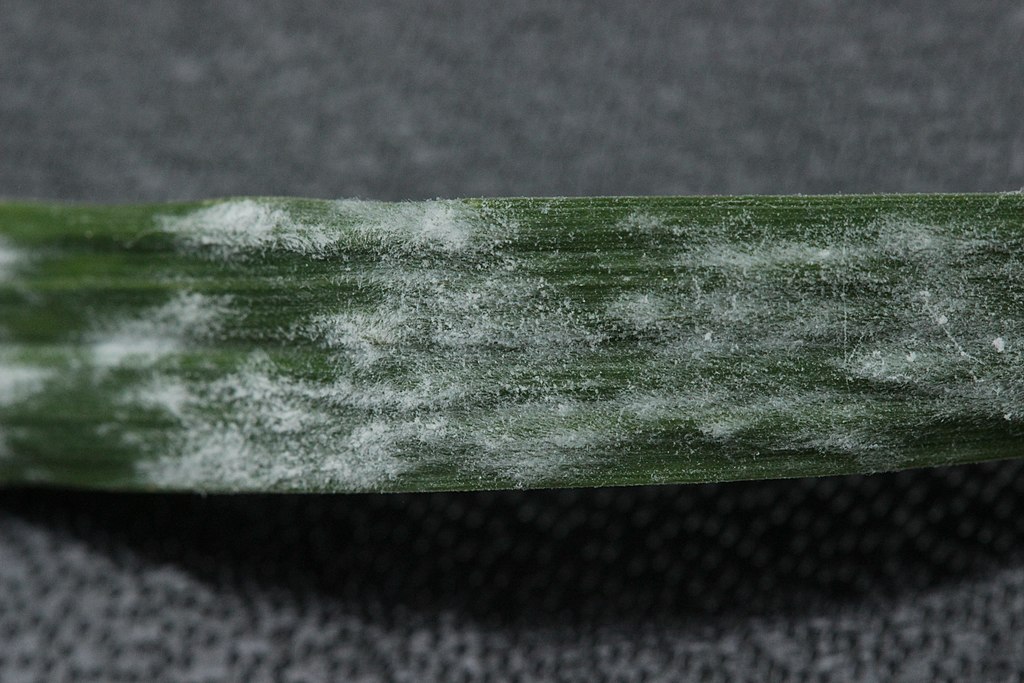
Other lawn diseases can strike in fall, too.
Is your lawn turning brown in patches? Lawn damaged by fungus will often have a brown dead spot where the grass has died, but a lighter yellow-ish-brown ring around that where the fungus is spreading.
The type of disease will determine the course of treatment.
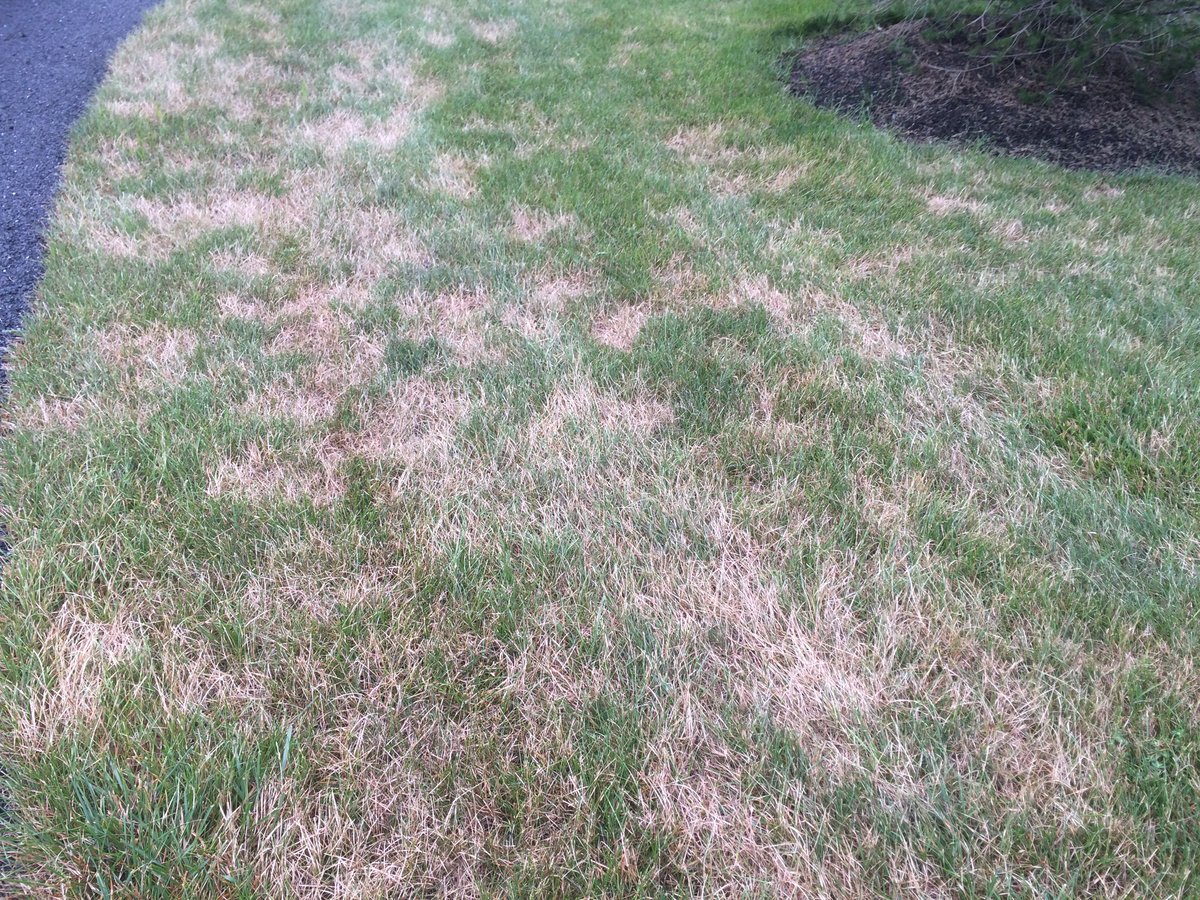
Applying fungicides can help treat many diseases and revive brown grass. A professional lawn care technician can help with diagnosis and proper treatment.
Meanwhile, you can head off lawn fungus with good preventive maintenance. Invest in a balanced fertilization program that provides the necessary nutrients at the appropriate times of year.
And keep your mower blades sharp. Grass blades that are torn by dull mower blades are not only susceptible to lawn fungus, they also help to spread it across your lawn by introducing it to healthy grass while it clings to the mower blades.
4. Fall Lawn Problem: Grubs
If you think Halloween ghouls are gross and creepy, wait till you encounter grubs. Ick.
While we typically see a big outbreak of grubs in August, the slimy critters can linger into fall, too.
Grubs are the larvae of Japanese beetles, June beetles, chafers, and other beetles.
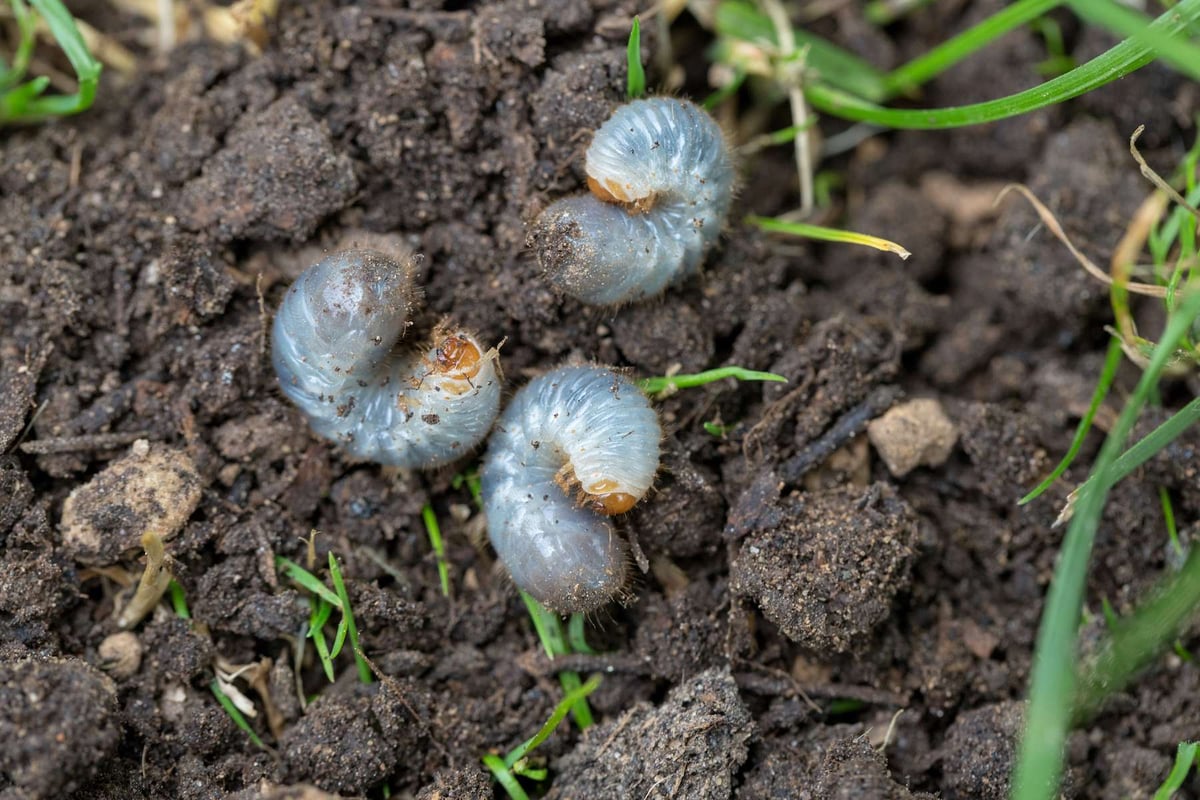
These white, C-shaped grubs have soft squishy bodies with legs near their head. They feed on grass roots and organic matter in the soil, causing sections of grass in the lawn to die.
It can happen really fast. One day you’re looking out at your healthy lawn, two days later it’s wiped out — entire patches will be brown, dry, and wilted.
Got critters on your lawn? That might mean grubs.
If you have moles, skunks, raccoons, or birds digging around your turf, that can be a sign of grubs.
Apparently, grubs are delicious.
Other signs of lawn grubs:
- Grab a handful of your lawn and tug. If it rolls up like loose carpet, you probably have grubs. They eat the roots holding the turf firmly in place on the soil.
- Walk on your lawn. If it feels spongy, you could have grubs.
How to Get Rid of Lawn Grubs
The trick is to kill grubs before they hatch and start to chow down, so we’ll apply preventive lawn grub control in the spring to nip them in the bud.
What can you do? A well-fed and maintained lawn will have fewer grubs than one that’s hungry and stressed by drought.
Fall Lawn Care Tip: Add Aeration
Aeration helps prevent fall lawn problems by creating a healthier, happier lawn. Fall is a great time to aerate.
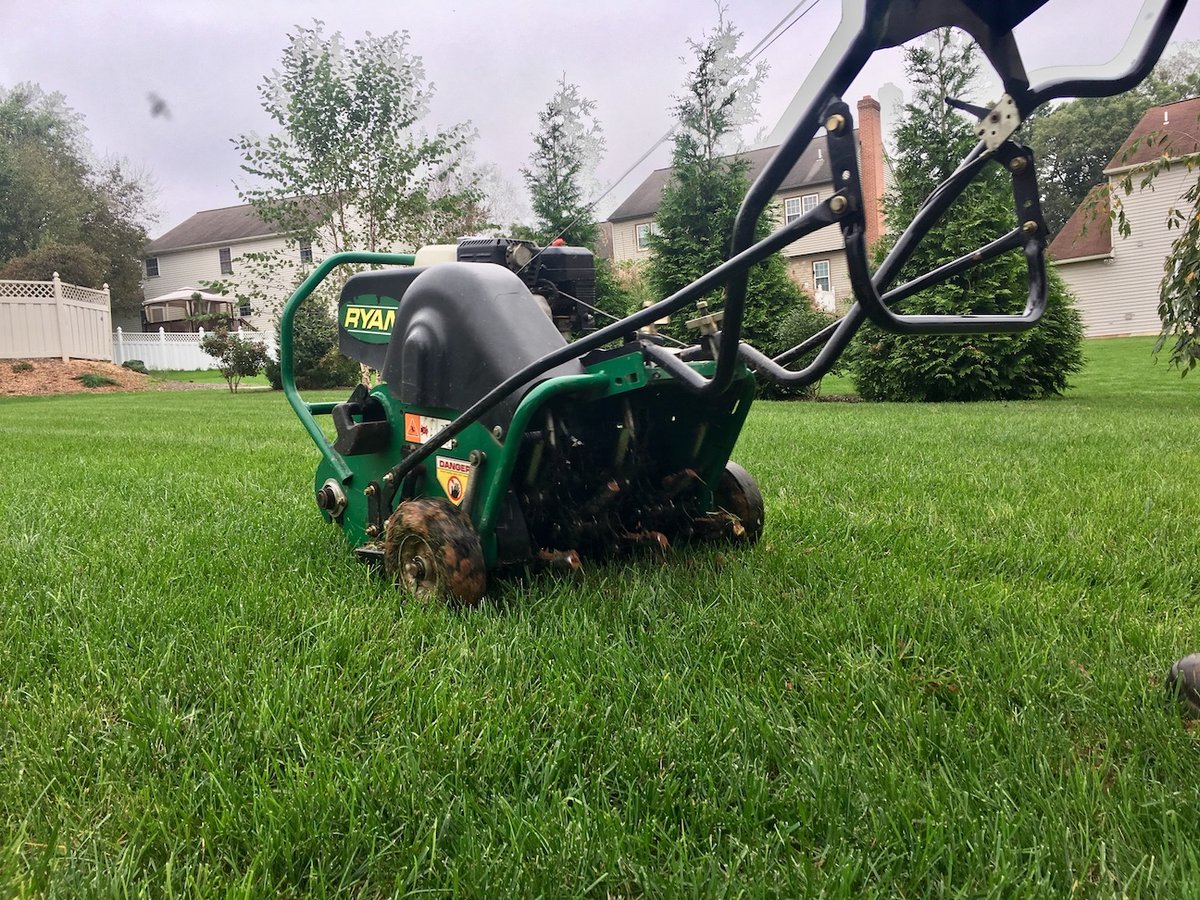
Those tiny cores of soil that aeration removes helps break up compacted soil, allowing water, air and other nutrients to reach the roots so your lawn will breathe easier come spring.
Pro tip: Don’t rake up the little cores of soil left behind. Leave them to break down over the winter. They’ll add nutrients to the soil.
A Healthy Lawn Helps Prevent Fall Lawn Problems
If all this talk of fungus, grubs, and weeds is scarier than your neighbor’s Halloween costume, there’s good news.
You can help prevent all these pesky problems by establishing healthy turf, including proper fertilizing, watering, and mowing.
Weeds, grubs, and fungus hate a thick, healthy lawn. So your best line of defense is to keep your grass thick, lush. and healthy with a lawn care service annual maintenance program for healthy, strong roots.
Is Your Lawn Ready for a New Best Friend?
If all this sounds like way more than you have time for, we get it.
Leave your fall lawn problems to us. You just worry about which sweater to wear.
Choose an Idaho Falls or Boise professional lawn care service that bundles your yard’s most-needed treatments into one convenient, no-fuss six-visit plan that includes everything your lawn needs to grow healthy and green, including weed control and grub control that’s perfectly timed throughout the year.
Fertilizing, weed control, grub control. Done.
Got a few minutes? That’s all you need to get started.
Fill out the form on this page.
Call us at (208) 656-9131.
Or read more about our services.
Then kick back and relax in your healthy, thriving yard.
Image Source: sprinkler, thistle, powdery mildew


